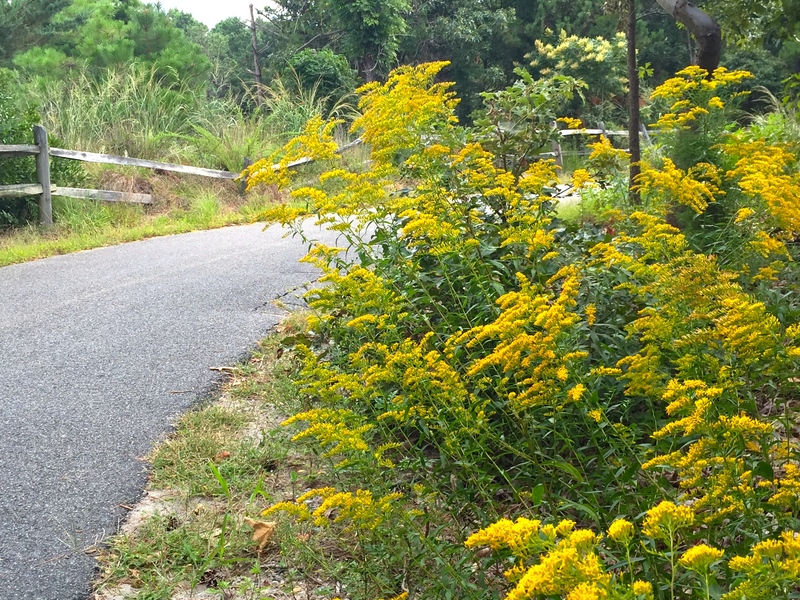Maisy Peach came to town last week, visiting from Seattle with her parents. Midway through the week, she started sniffling and coughing (Cover your mouth!) and we wondered whether she had picked up a summer cold. (“If I cover my mouth can we go to the ice cream store?”)
Then, on one of several trips to the state park beach, we noticed drifts and drifts of seaside goldenrod, in all of its yellow-blooming glory, adding festivity to the dunes and the marsh edges.
“That’s it,” I said as Maisy coughed and sniffed some more and settled on a root beer vanilla float. “It must be allergies, not a cold. Goldenrod’s blooming and Maisy must be allergic to it.”
Once more I found my comfort zone. Wrong again.
Not that it’s not goldenrod that’s blooming. That’s correct. But apparently goldenrod as an allergen is one of the great misconceptions. Ragweed, yes. Mugwort (some magical herb out of a Harry Potter novel), absolutely. But, as my friend Bruce advised, the pollen of goldenrod is too heavy to be blown through the air and into our noses and in so doing become a bargaining chip for a 5-year-old.
According to Wikipedia research, the pollen of goldenrod is not only heavy, but sticky too, which means it gets spread by insects such as butterflies and bees. Monarch butterflies feed heavily on goldenrod and depend on the energy from goldenrod nutrients to fuel their annual fall migrations to the mountains of Mexico. That migration is just beginning here along the coast.
Bees also make a lot of honey from the nectar they gather from goldenrod flowers.
Thomas Edison, Henry Ford and George Washington Carver found the stickiness of certain parts of goldenrod intriguing as well. According to Wikipedia, inventor Thomas Edison “experimented with goldenrod to produce rubber, which it contains naturally. Edison created a fertilization and cultivation process to maximize the rubber content in each plant. His experiments produced a 12-foot-tall (3.7 m) plant that yielded as much as 12% rubber. The tires on the Model T given to him by his friend Henry Ford were made from goldenrod.”
Seaside goldenrod may not be the allergen we think it is, but this prolific fall bloomer that characterizes our coastal areas in the fall doesn’t lack interest. That interest wasn’t lost on Delaware legislators, who in 1996 voted a variety of goldenrod - solidago odora - to be the official state herb. Also known as sweet goldenrod, the licorice-flavored herb found its way into American history after the Boston Tea Party. When the British saw no sense in shipping tea to people who preferred to steep it in their bays and rivers rather than their cups, colonists had to switch to something more readily available. You’ve got it - goldenrod. Quickly, the new colonial herb tea was dubbed Liberty Tea.
The beauty of goldenrod, its pervasiveness throughout Delaware along its shoreline, coast and marshes, and its historical importance proved too intoxicating for the lawmakers to ignore.
And Maisy Peach too. Despite my error about her allergy, Maisy liked being connected somehow to the pretty flowers. Still, we couldn’t persuade her to ask the people at the ice cream store for a goldenrod milkshake instead of root beer vanilla.















































